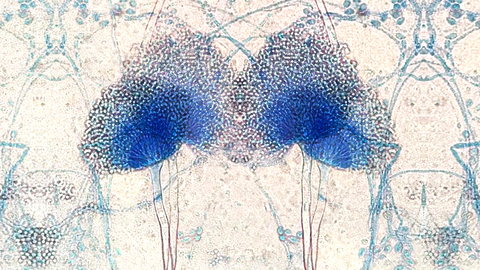
We are thrilled that the interest in the human microbiome has exploded! Although we are passionate about this topic, we don't take for granted that this is what you chose to dig deep into. So here is a basic overview of what it is all about and why we are so dedicated to these tiny organisms.
What is the skin microbiome?
The trillions of microorganisms living on your skin are collectively referred to as the microbiome, microbiota or the skin flora. Just like a fingerprint, your skin microbiome is specific to you. It consists of around 1000 different species of bacteria, 80 different types of fungi as well as viruses and mites. Some species are specific to an area of your body, so you will find a different community of microorganisms on your feet than in your armpits. Not long ago, we thought they only lived on the outer layer of the skin, but we now know that the microbiome can be found in all layers of the skin. More recent research has also shown that the skin microbiome communicates with the gut microbiome and the brain and vice versa. However, we only know a tiny fraction of this intricate system, new research is constantly published, and so far, the findings never seem to stop astonishing.
Why is the skin microbiome important?
Your microbiome thrives when your skin is moist, nourished and healthy. Therefore, it is constantly working hard on achieving this state. It is responsible for regulating pH-level, protecting from outside factors such as sunlight and air pollutants, producing moist-binding agents, as well as vitamins, hormones and chemicals affecting your mood. It is also your first immune defense towards foreign invaders. When your skin flora is in balance it can out-crowd the unwanted pathogens, if on the other hand, your skin flora is depleted there is space for other bacteria and viruses to take root. A few signs that your microbiome is unbalanced are things such as dryness, eczema, acne, rosacea and psoriasis.
How do we nourish the microbiota?
There are several things you can do to support your skin flora. Since the microbes in your gut affect the milieu on your skin, the food you eat is one factor. Eating gut-supporting foods, such as vegetables, fruits, fermented foods and whole grains, will be beneficial for the microbiota in your gut as well as the skin.
Exercise and movement are other things that have been linked to a healthy skin flora (they thrive on your salty sweat). This may be more applicable to you than to your baby.
Being outside in nature and spending time with animals, plants and having your hands in the soil will increase the diversity of the microbiome.
Over sanitizing and too much cleansing with soap and other antibacterial products not only gets rid of the unwanted bacteria but also the good ones. Using gentle cleansing agents and not over-cleansing as well as moisturizing will help restore your skin's natural elasticity and support a strong barrier. You can read more about how to cleanse without disrupting your skin flora here .
Skincare products with harsh ingredients will also create an unbalanced skin flora, leading to the need for more products to treat the symptoms. Ingredients to look out for are things such as parabens, sulfates (one common one is SLS), EDTA, mineral oils , phthalates, formaldehyde, synthetic fragrance and synthetic preservatives .
Using natural, microbiome friendly skincare will help you restore and protect the microbes on your skin. If you now, after reading this, suspect that your skin flora may not be in balance, don't stress about it. The microbiome is quite impressive in rebuilding itself if the right environment is created - so it is never too late to start!
